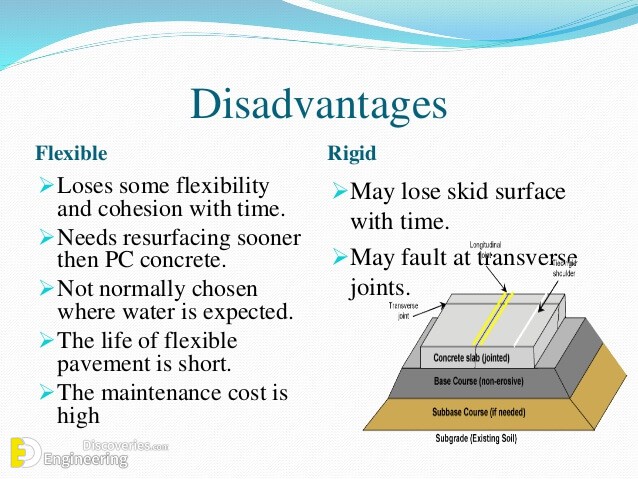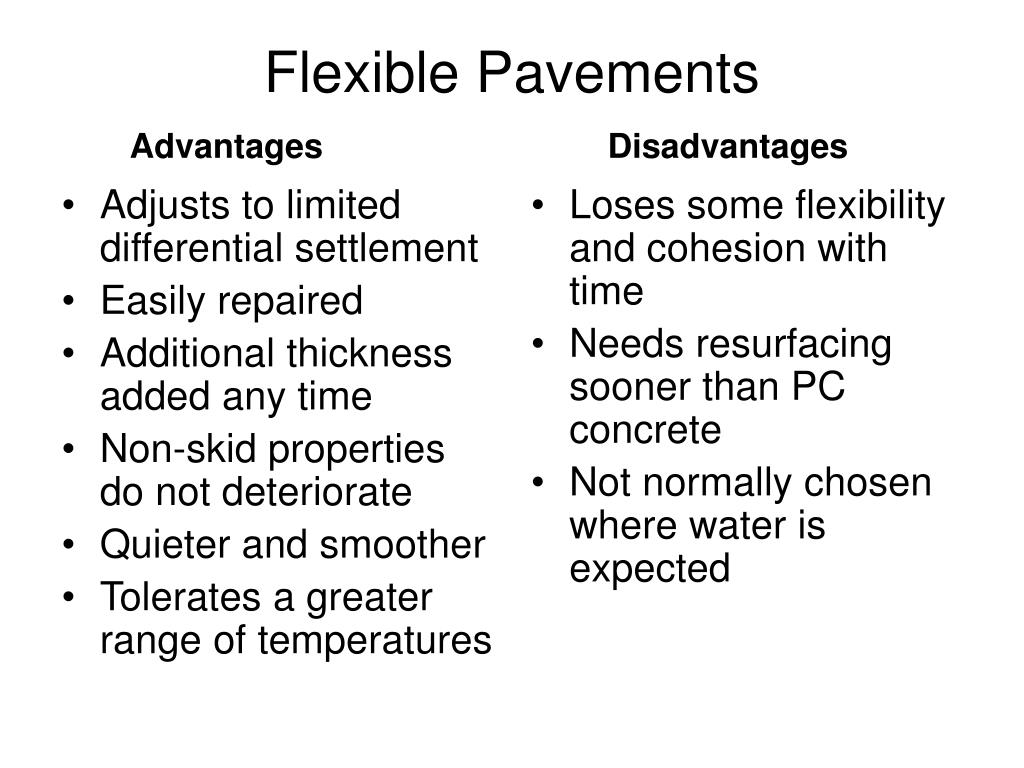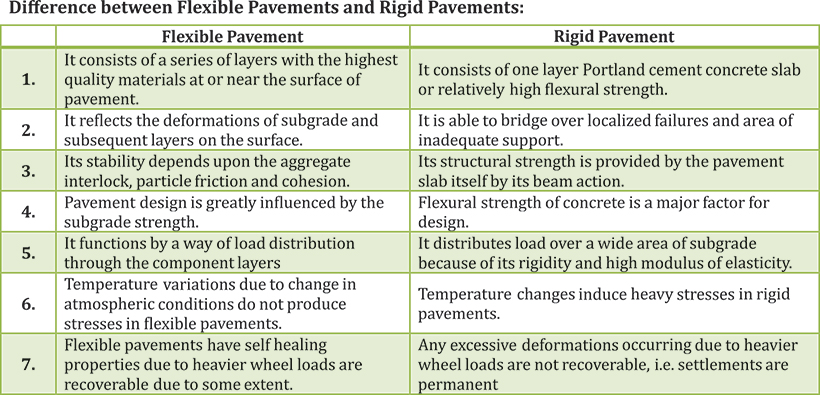Advantages and Disadvantages of Flexible Pavement
The width of the beam in the waffle slab ranges from 100 mm to 200 mm. The thickness of the waffle slab is generally range from 80 mm to 100 mm.

Civil Made Easy Components And Advantage Disadvantages Facebook
Flexible pavements are the type of road pavement that can change their shape to some extent without rupture.

. Rapid transit is an important form of mass transit such as subways and surface light rail systems designed for. The design of the waffle slab depends upon the total area on which the waffle slab is required. It offers lateral stability to the granular base course and flexible pavements.
A larger area can be sensed remotely in a very easy way and the whole data can be easily processed and analysed fast by using the computer and that data is utilised for various purposes. Curb or kerbs are provided for the following purposes. However flexible pavement requires routine and maintenance repairs every few years.
It has a blackish-brown colour and is available as a solid at low temperatures and as a liquid at temperatures above 50C. 1 minute Concrete waterproofing is the application of impervious material layer on concrete which prevents water from penetrating and making the structure waterproof so that it remains relatively unaffected by water. This type of cracking is associated with the unusual expansion and contraction of concrete in the rigid pavement and due to improper mixing or aging of asphalt or poor quality asphalt in flexible pavement.
Asphalt is known as a mixture of bitumen as binding material and a significant amount of inert minerals such as sand gravel and crushed stone. Flexible pavement is composed of a bituminous material surface course and underlying base and subbase courses. This prevents the vehicle from parking beside the road.
It can also be termed as Public Transport. Block cracking is mainly caused by shrinkage of the. I am discussing various advantages and disadvantages of Remote sensing.
The bituminous material is more often asphalt whose viscous nature allows significant plastic deformation. It acts as a boundary between the. The overall depth of the waffle slab is limited to 300 mm to 600 mm.
Flexible pavement distributes the load over a subgrade beneath a relatively smaller area. Block cracking is another cracking seen on highway pavements that form a box-like crack on the surface. Concrete is pervious and porous compound which absorbs water waterborne contaminants and chemicals that will cause deterioration to.
The spacing between two consecutive ribs ranges from 600 mm to. In the case of the flexible pavement the loads that are generated by the movement of vehicles are transferred to the. Advantages of Remote sensing.
Most asphalt surfaces are built on a gravel base although some full depth asphalt surfaces are built directly on the subgrade. The initial installation of a flexible pavement cost is quite low which is why flexible pavement is more commonly seen universally. The road pavements are mainly classified into two basic types which are as follows.
Mass transit system refers to public shared transportation such as trains buses ferries etc that can commute a larger number of passengers from origin to destination on a no-reserved basis and in lesser time. Asphalt materials can be found in nature as natural deposits in many areas but they can also be. What are the uses of road kerbs.

Difference Between Flexible And Rigid Pavement Engineering Discoveries

Civil Made Easy Components And Advantage Disadvantages Facebook

Ppt Pavements Powerpoint Presentation Free Download Id 2403254

Flexible Pavement Versus Rigid Pavement
0 Response to "Advantages and Disadvantages of Flexible Pavement"
Post a Comment